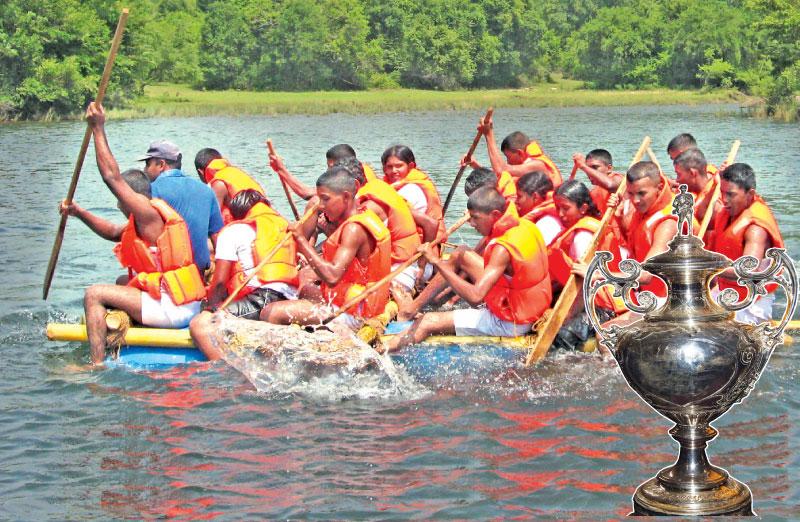
- Hermann Loos Championship Trophy – awarded annually to the best performing cadet platoon from a boys’ school
- l This year’s competition will be held from October 11 to 20 at Rantambe – 1,425 cadets from 57 schools will be participating
- l Seventy nine participants from SAARC countries including directors, officers, school cadets are due to attend
 Identifying the leadership potential in people is a key strategy in developing the dormant attributes in them. Some opine that leaders are not born, but are made. It is in a person’s student life that his/her future career is identified, and with the help of wise teachers the student will walk the path of success. The important skills of teamwork, perseverance and decision making are a must for any leader.
Identifying the leadership potential in people is a key strategy in developing the dormant attributes in them. Some opine that leaders are not born, but are made. It is in a person’s student life that his/her future career is identified, and with the help of wise teachers the student will walk the path of success. The important skills of teamwork, perseverance and decision making are a must for any leader.
Hermann Loos encourages excellence
Cadeting has existed in Ceylon for more than a century. It was in 1881 that John Cull the Principal of Royal College introduced cadet platoons to the local boys. At that time S. Thomas’ College (Mt. Lavinia), Wesley College, Kingswood College (Kandy), Trinity College (Kandy) and Richmond College (Galle) embraced this concept. These schools, including others have since produced some outstanding leaders, especially, in the topmost echelons of the military.
In 1917, a district judge by the name of Hermann Loos donated a trophy to the Cadet Corps. In the past 100 years, many cadet platoons have competed with determination to win this coveted award as it is the highest recognition to the entire school platoon. In 1917, for the first time the trophy was won by Kingswood College, Kandy. To date, platoons that have excelled in drill and other subjects are judged at provincial level and meet every October for the final selection to compete for the trophy. Hermann Loos has thus motivated young men and women for a century.
During 1971, cadets were mobilized alongside regular army units in counter insurgency operations, where 108 cadets displayed their prowess and courage.
In 1972, a separate Police cadet platoon was set up and for sometime was a Police reserve force.
Training and personality development
 In 1981, the corps celebrated their centenary. The girls’ corps was established in 1985, thus bringing female students into the arena of cadeting.
In 1981, the corps celebrated their centenary. The girls’ corps was established in 1985, thus bringing female students into the arena of cadeting.
Subsequently, the Cadet Corps was under the command of the late Major. General E.G.Thevanayagam VSV. The present commandant is Major. General Ajith Wickremasinghe.
Many would assume that cadet training is totally a military experience. This is not so, as the primary aim of cadeting is to produce young leaders who display a positive personality and are able to meet challenges.
Forward March
The training is good for anyone who can take his or her own career path. Cadets are not obliged to join the military. President Maithripala Sirisena was also a cadet at Royal College, Polonnaruwa. I spoke to Director Training, Colonel Wakkumbura who said, “We train our student cadets at all 9 Provinces through 38 battalions. We monitor their progress from start to end. We teach our boys and girls leadership, management, first aid and information technology. It is only later that they learn drill, firing and first aid”. The cadets have training camps at Rantembe. Senior cadets are engaged in an assault course where they must complete a 1.2 Km run with 19 obstacles. The students will enhance their character, discipline, civil mindedness, responsibility and comradeship. At present there are almost 60,000 cadets.
The officer at the helm of this dynamic organization is Major General Ajith Wickremasinghe. The prudent General said, “We have 3 objectives for 2017. Under the directive of the President we want to gradually introduce the cadet concept to all schools, and we have received a positive response. The Northern Province has given us a good feedback and we have 82 platoons in the North, where students participate earnestly”. To date 5,700 schools have been identified and thus far, 500 schools from all Provinces have been introduced to cadeting.
Gen. Wickremasinghe also said, “Our second goal was to reintroduce junior cadeting after a lapse of 35 years. This is for students in Grades 7 and 8. We have found some schools in Trincomalee and Moneragala. Our third aim is to increase the number of cadets island wide”.
Rural schools are also encouraged to improve the standard of English. Headquartered at Kohuwala, the National Cadet Corps is thankful for the extensive support received from the Ministry of Education.
The cadet mechanism is jointly shared by officers of the Army, Navy, Air Force and Police, who have their instructors. Cadets also get a chance to visit SAARC countries on exchange programs. Many senior military officers were once cadets. One such person is Rear Admiral Piyal de Silva, currently, Director General Operations at Navy Headquarters. He said, “I was a cadet at Dharmashoka College, Ambalangoda. We excelled in drill in 1979.
My cadeting helped me join the Navy”. Thus, for the young mind that desires to excel in the future the cadet process is a fine avenue of training. In this sphere of training one learns the importance of teamwork and communication.
As John Maxwell said, “A leader is one who knows the way, shows the way and goes the way.” Being a cadet is a privilege and a solid foundation to be a productive Sri Lankan.
According to officials, the best 75 school cadets will be entitled to University Grants Commission (UGC) bonus marks to enter the university.
